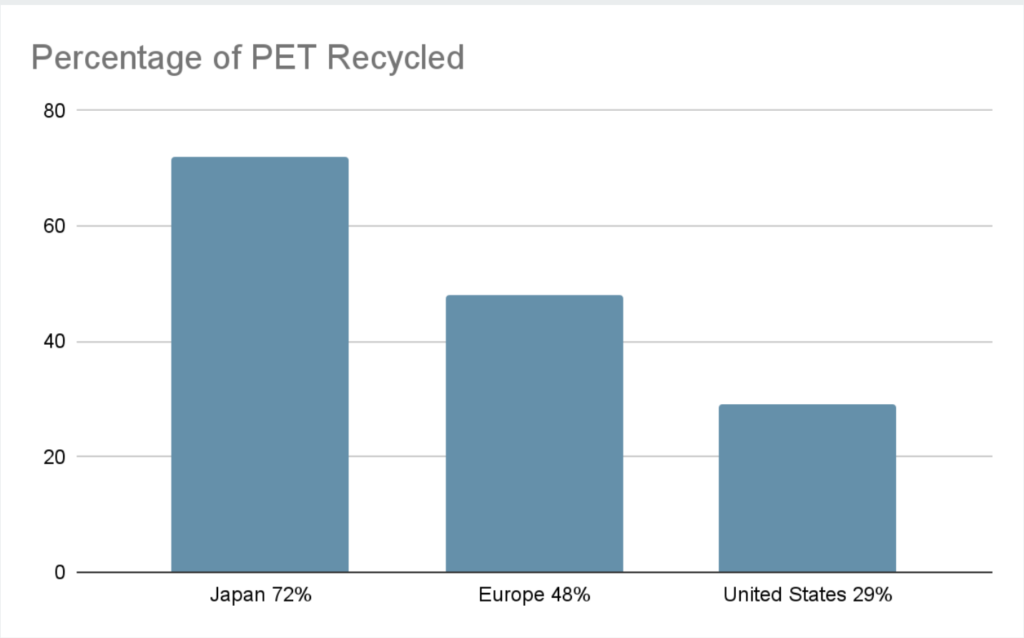3 Ways to reduce and improve carbon emissions globally
For consumers, brands, and countries looking to reduce their carbon footprint and carbon emissions, look no further than your trash can, donation bin, or closet. Some of the easiest ways to reduce our carbon footprint as a society start simply, with textiles and recycling technology. Here are three examples of simple steps we can take right now.
1. Reduce Textile Waste
Clothing and textiles are discarded at alarming rates. Fast fashion trends make it easy for consumers to purchase inexpensive clothing. People wear it for a limited time, then throw it away or place it in a donation bin (which often ends up as landfill waste).

Yet, many customers don’t realize that even before clothing hits store shelves, there is textile waste. Every year between 20 and 40 percent of new yardage becomes wasted fabric. This is due primarily to cutting room scraps at the factory and overstock at the point of purchase. This pre-consumer waste is a challenge for the clothing industry.
Saya recognizes material waste as a valuable resource. The company is working on pilot programs to renew pre-consumer cutting scraps and overstock, in cooperation with key strategic brands.
Brands and consumers can help reduce textile waste by buying less and focusing on higher quality products that will stay in circulation longer and offer more utility. They can also look for brands that utilize scrap textile in their manufacturing and offer recycled polyester fabric options.
2. Improve Recycling Technology to Reduce our Carbon Footprint
Another way to reduce our carbon footprint is to offer better recycling options globally. Investments in recycling technology make it possible for recycling centers and manufacturers to accept a wider variety of plastics. In addition, it helps the consumer, because they no longer have to sort plastics by number or exclude certain plastics from the recycling bin.

Better technology keeps more plastic out of landfills and away from our oceans. And, ultimately, it helps businesses by providing a higher quantity (and better quality) of recycled plastic that can be renewed into textiles or other products. Advanced recycling technology requires less energy and produces less waste. It also allows plastic to be returned to its molecular level, making it more versatile and strong.
“Continuous innovation in renewal technologies is important to increase the yield and of the recycled goods collected,” explains Saya’s Director of R&D Jack Chen. “This is the only way we can someday achieve circularity.”
3. Make Recycling More Accessible to Reduce our Carbon Footprint
Finally, recycling technology is only helpful if consumers know about it and can access it. The current recycling rate in the United States is only 29 percent. Compare that to 72 percent in Japan and 48 percent in Europe. How can we lower the barriers and make recycling more accessible in the United States?

Ease of recycling is the most important influence on customer behavior. Call2Recycle, a battery recycling program, found that simply reducing the distance from the consumer to drop-off sites to under 10 miles significantly increased recycling behavior. The goal is to eventually make it easier for customers to recycle from home.
Throughout the US, curbside recycling is typically limited to glass, paper, aluminum, and certain types of plastic. Other recyclables, such as batteries, electronics, or textiles require that consumers make a special trip to a drop-off location or recycling center. The solution? Either bring those recycling locations closer to home or motivate people to make the extra effort to transport their hard-to-recycle items elsewhere.
Educating the public on the benefits of recycling everything, including polyester fabric, is a good motivation, but brands can also make recycling easier for their customers. Offering recycling bins at the point of purchase, for example, will help improve circularity and reduce the consumer (and brand’s) carbon footprint.
Another idea? Bring advanced recycling technology to more communities around the world so that customers can someday toss any type of plastic or polyester into their curbside bin.
To learn more, contact change@sayarenew.com
